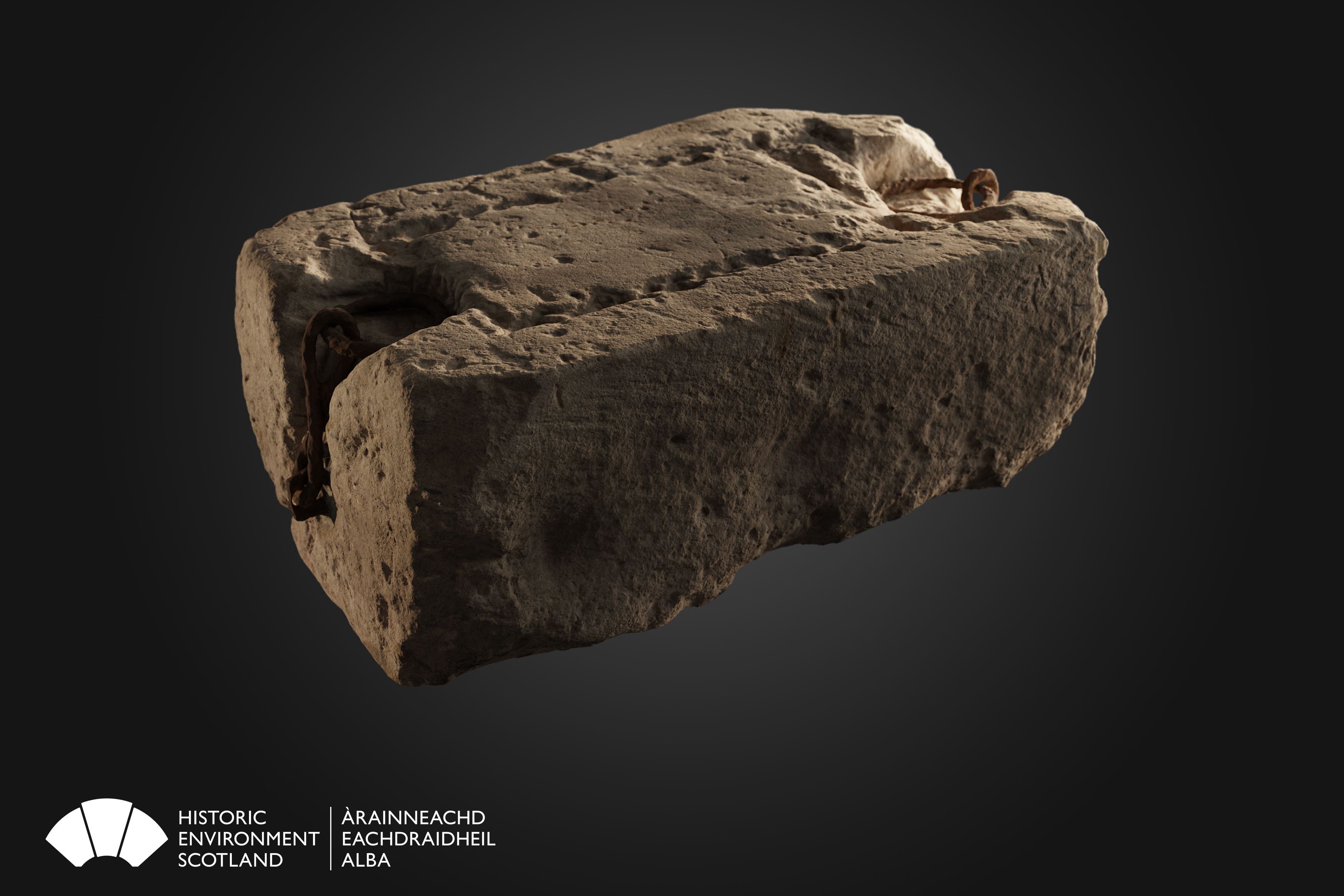‘Roman numerals’ found on Stone of Destiny ahead of King’s coronation
The details were discovered when a 3D-printed replica of the stone was examined by experts.

Your support helps us to tell the story
From reproductive rights to climate change to Big Tech, The Independent is on the ground when the story is developing. Whether it's investigating the financials of Elon Musk's pro-Trump PAC or producing our latest documentary, 'The A Word', which shines a light on the American women fighting for reproductive rights, we know how important it is to parse out the facts from the messaging.
At such a critical moment in US history, we need reporters on the ground. Your donation allows us to keep sending journalists to speak to both sides of the story.
The Independent is trusted by Americans across the entire political spectrum. And unlike many other quality news outlets, we choose not to lock Americans out of our reporting and analysis with paywalls. We believe quality journalism should be available to everyone, paid for by those who can afford it.
Your support makes all the difference.New research has revealed the Stone of Destiny, used for centuries in the coronation of monarchs, has previously unrecorded markings that appear to be Roman numerals.
The details were discovered when a 3D-printed replica of the stone, created as part of preparations for the King’s enthronement next month, was examined by experts.
It allowed the ancient object to be viewed from different perspectives in higher detail than before by researchers from Historic Environment Scotland (HES), which cares for the stone on behalf of the Commissioners for the Safeguarding of the Regalia.
Ewan Hyslop, head of research and climate change at HES, said: “The high level of detail we’ve been able to capture through the digital imaging has enabled us to re-examine the tooling marks on the surface of the Stone, which has helped confirm that the Stone has been roughly worked by more than one stonemason with a number of different tools, as was previously thought.
“The discovery of previously unrecorded markings is also significant, and while at this point we’re unable to say for certain what their purpose or meaning might be, they offer the exciting opportunity for further areas of study.”
The Stone of Destiny, also known as the Stone of Scone, is normally displayed at Edinburgh Castle and plays an important role in Scotland’s history.
Its origins are lost in time but it is rumoured to have biblical connections and it may have played a role in the enthronement of Scottish kings for over a century before its first recorded use in 1057, when Macbeth’s stepson Lulach was proclaimed king at Scone in Scotland.
The stone is believed to have been used in ceremonies to crown Scottish monarchs from that date until it was seized in 1296 by King Edward I and taken to England.
It was placed in a specially constructed coronation chair which has since remained at Westminster Abbey and will be used for Charles’s enthronement.
The stone made headlines on Christmas Day 1950 when four Scottish students removed it from the abbey, and it was found three months later at the high altar of Arbroath Abbey. It was officially returned to Scotland in 1996.
X-ray fluorescence analysis was used to examine the composition of the stone and discovered traces of copper alloy on its surface, coinciding with a dark stain near its centre, suggesting the Stone had at some point been in contact with a bronze or brass object.
Microscopic traces of gypsum plaster were also found, possibly traces of a cast.
A study in 1998 by the British Geological Survey concluded the artefact was indistinguishable from sandstones of “Scone Sandstone Formation” from the area around Scone Palace near Perth.
The coronation chair has been undergoing restoration work before the crowning of Charles and conservators have found previously unrecorded decorations on the object.
It was made around 1300 for Edward I to house the stone and was constructed from oak, decorated with coloured glass, gilded with gold leaf and painted by Master Walter, the King’s Master Painter.
Monarchs may have sat on the stone itself, with a cushion for comfort, but at some point a seat was constructed within the chair and the 3D model of the stone is being used to help the fitting of the original.